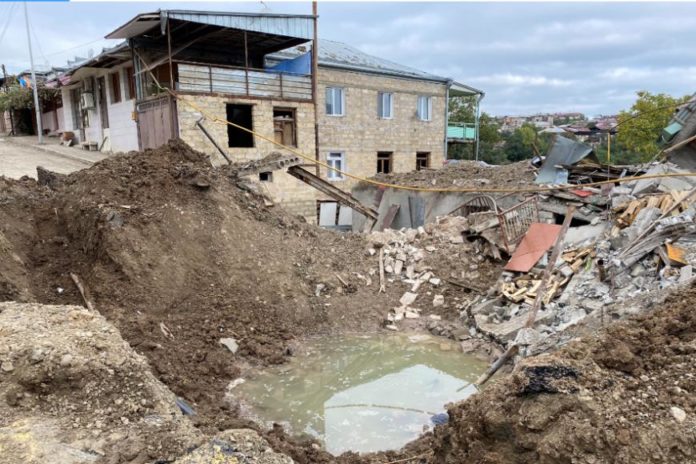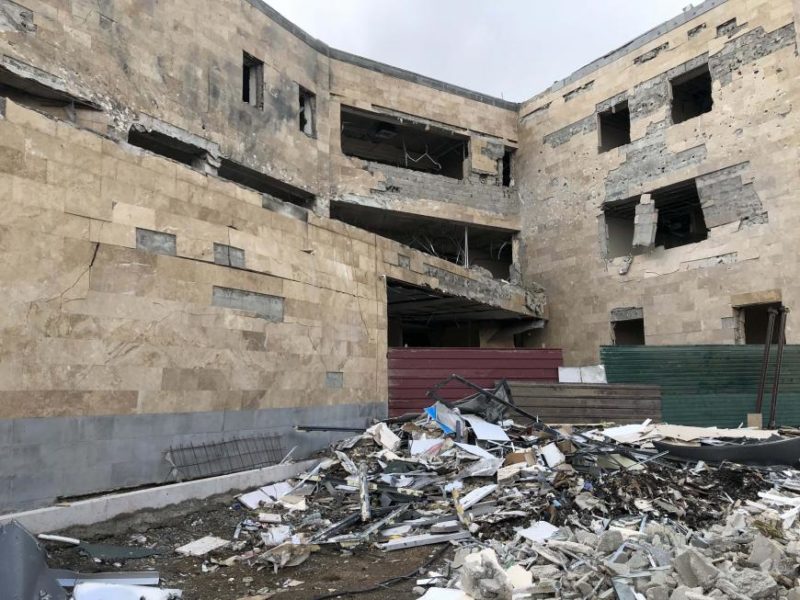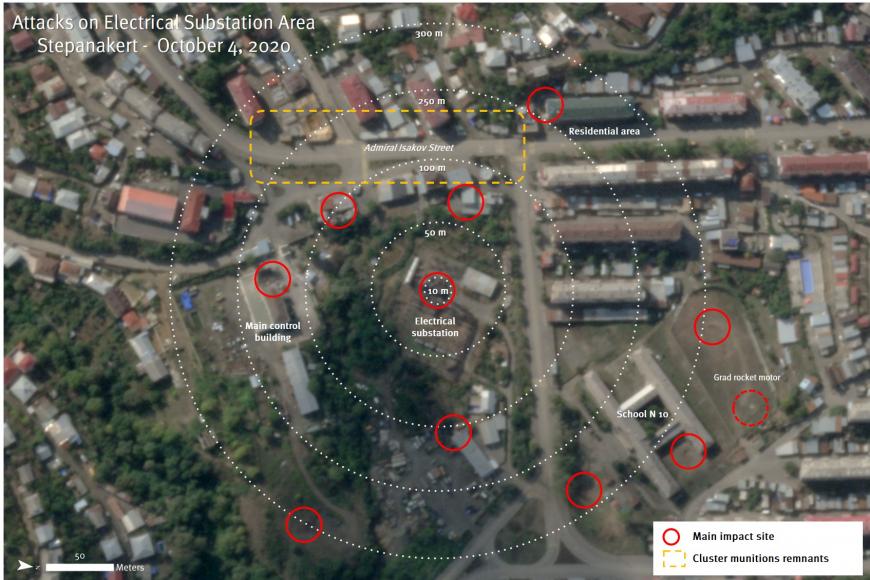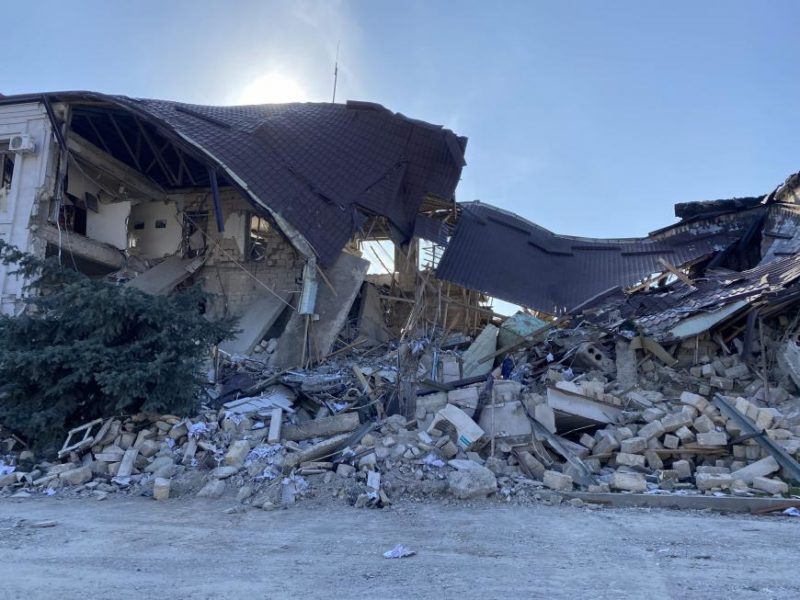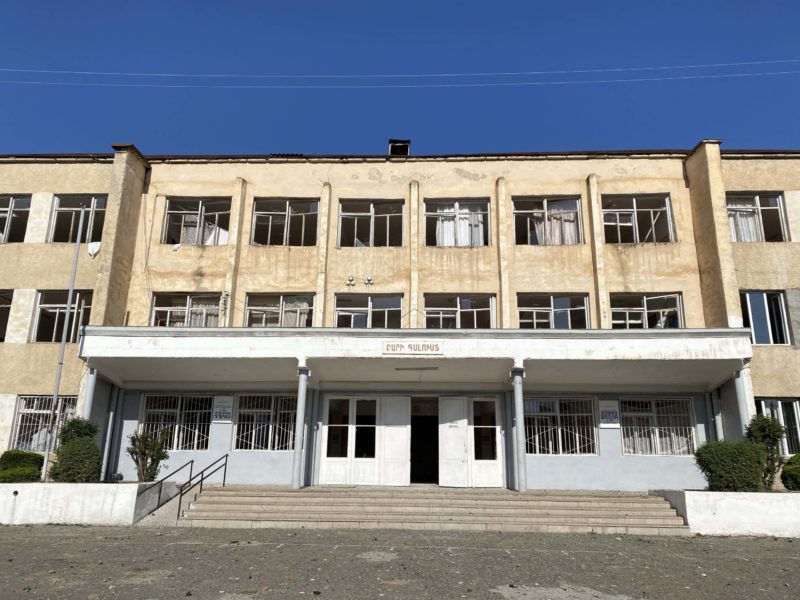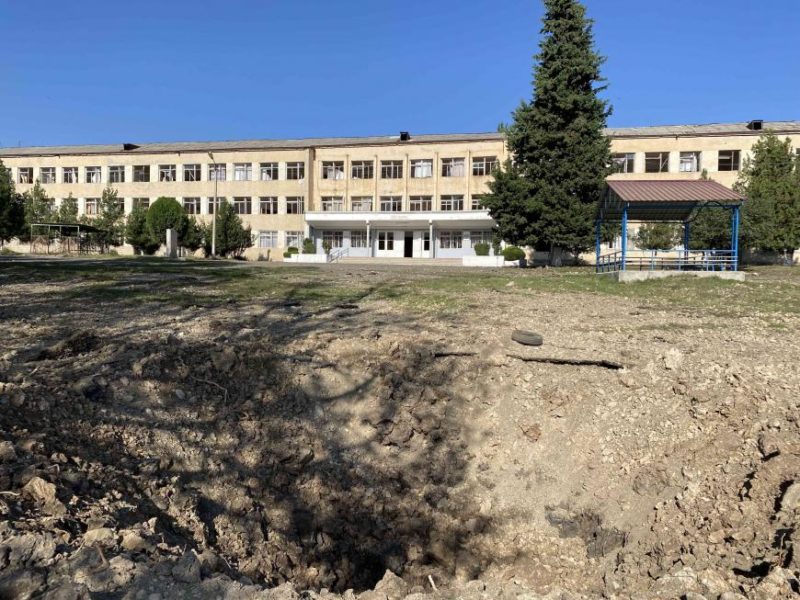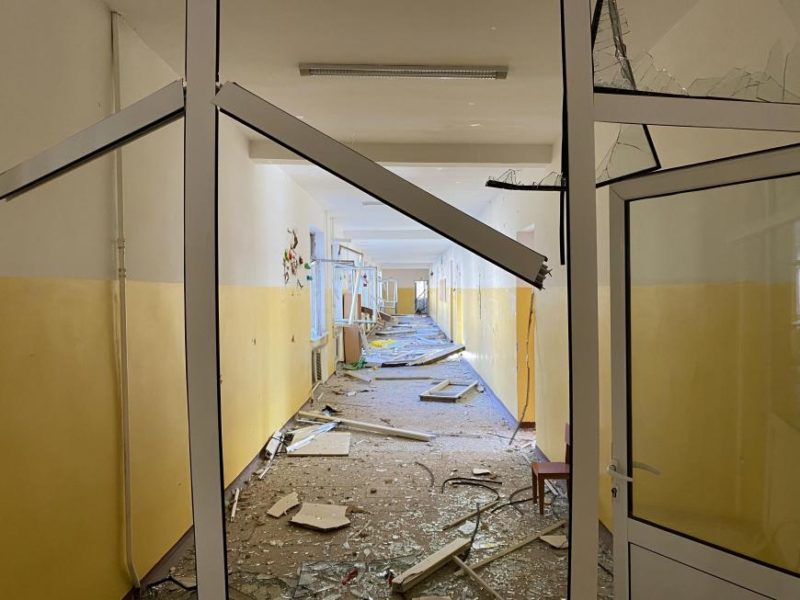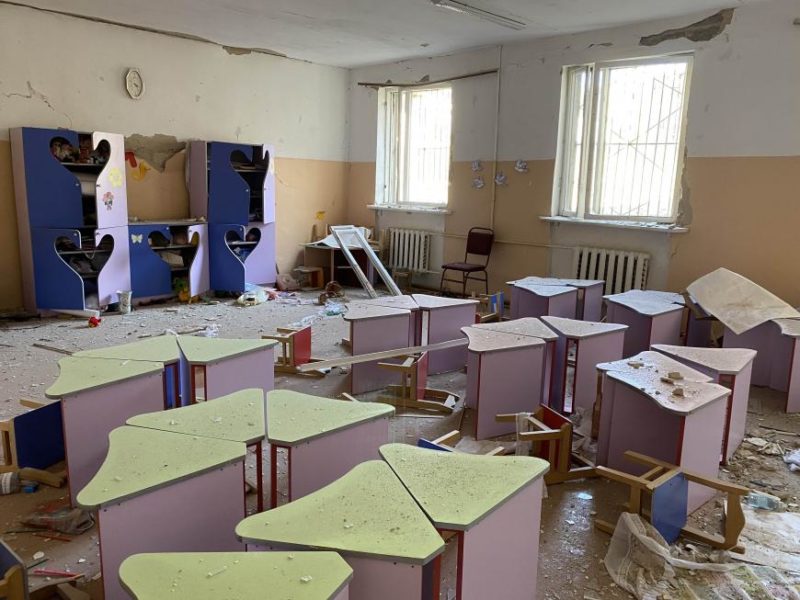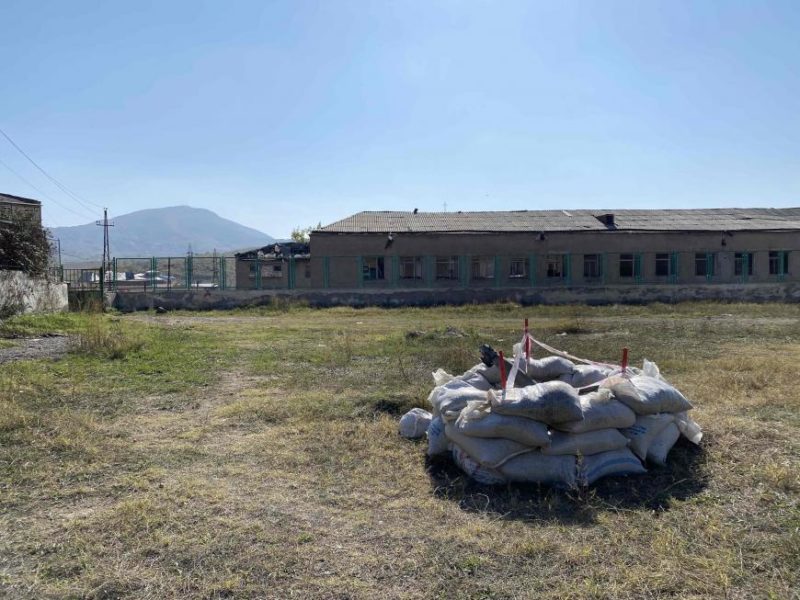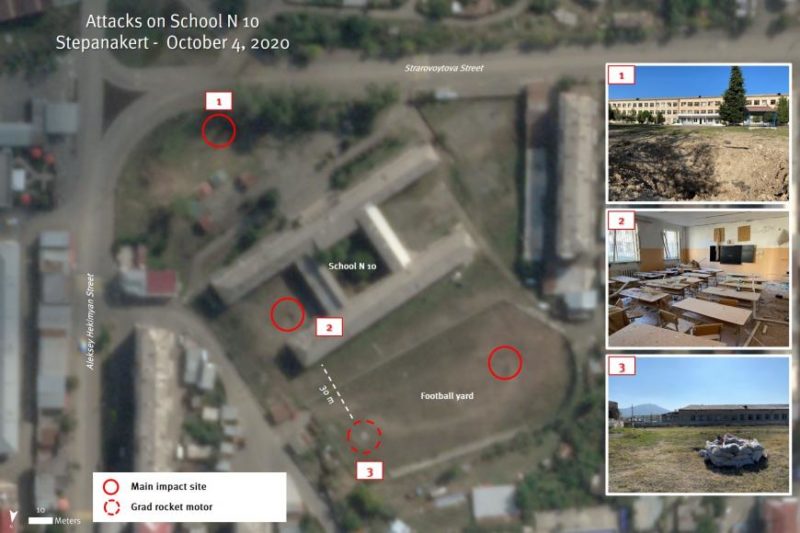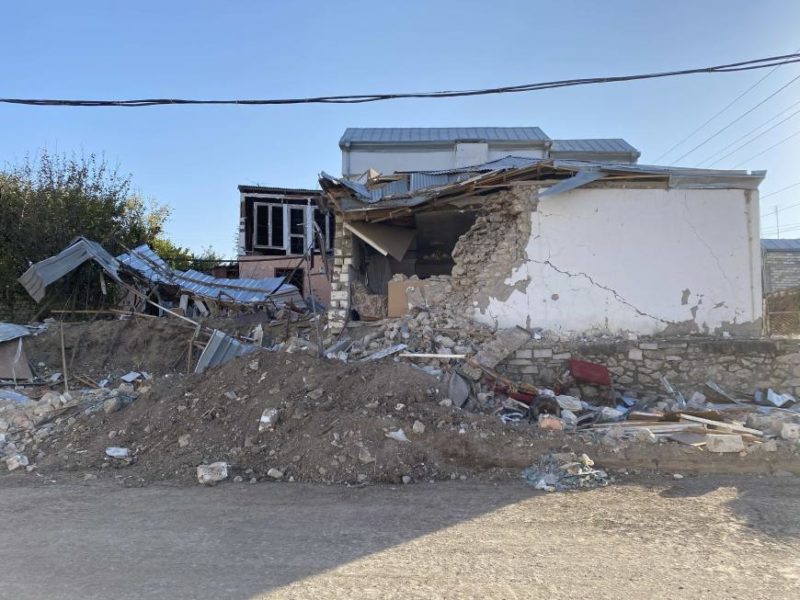STEPANAKERT (Human Rights Watch) – Azerbaijani forces carried out apparently indiscriminate attacks in Stepanakert in violation of the laws of war during the conflict in Nagorno-Karabakh, Human Rights Watch said on December 11.
A Human Rights Watch on-site investigation in Stepanakert, Nagorno Karabakh’s largest city, found numerous incidents in which Azerbaijan’s forces used inherently indiscriminate cluster munitions and artillery rockets or other weapons that did not distinguish between military targets and civilian objects. Evidence relating to an attack on October 4, 2020, indicates that multiple strikes hit residential homes in less than a minute suggesting possible bombardment – treating the whole area as a military target – which is prohibited under the laws of war. Azerbaijani forces also attacked infrastructure that may have an unlawfully disproportionate impact on the civilian population. The use by Armenian and local Nargono-Karabakh forces of military bases and dual-use infrastructure in Stepanakert placed the civilian population unnecessarily at risk.
“Azerbaijani forces carried out apparently indiscriminate air and ground strikes hitting civilian structures in Nagorno Karabakh’s largest city that should be impartially investigated,” said Lama Fakih, crisis and conflict director at Human Rights Watch. “While the hostilities may have stopped, the civilian population continues to suffer from possibly disproportionate attacks on critical infrastructure.”
On September 27, Azerbaijan began air and ground attacks across Nagorno-Karabakh, an escalation in the conflict between Azerbaijan and Armenia and the local authorities in Nagorno Karabakh. Fighting continued until November 10, when Armenia, Azerbaijan, and Russia concluded an agreement to end the hostilities.
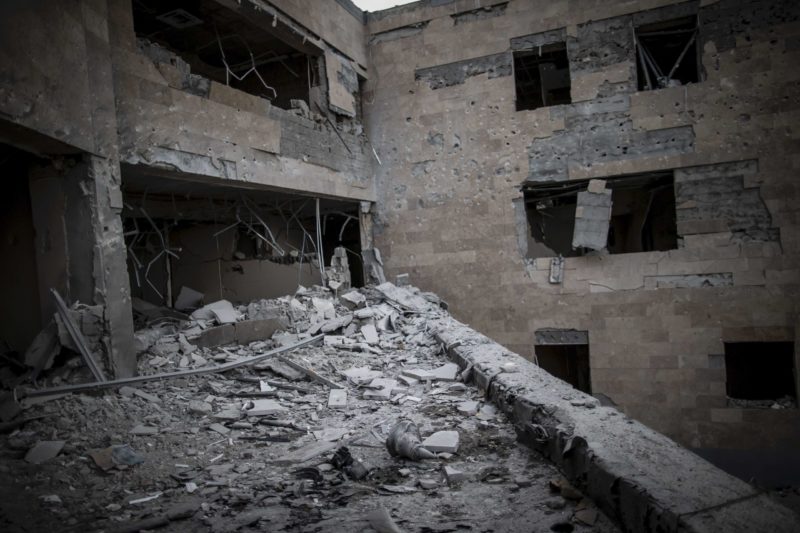
From September 27 through October 28, Azerbaijani forces conducted strikes on Stepanakert, at times using cluster munitions and Smerch and Grad rockets, which are not capable of precision targeting. Azerbaijani forces attacked Armenian and Nagorno-Karabakh forces based in or around Stepanakert, including at two military bases, one of which is believed to be the headquarters for the local defense forces. Several structures were also military objectives, subject to attack. However, Human Rights Watch found that in the attacks investigated, Armenian and local forces were not deployed nor had set up any significant defensive systems or other weaponry in the city.



